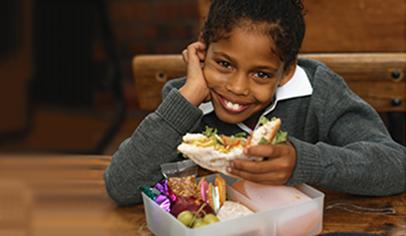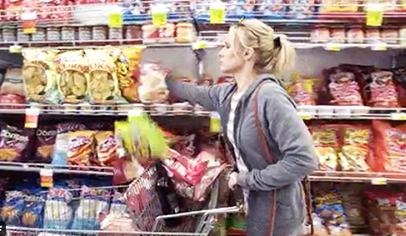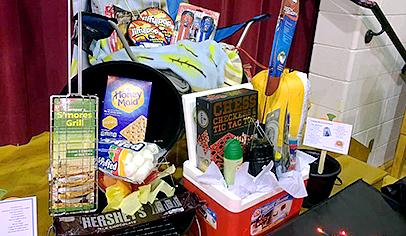Lots of parent groups help raise student awareness of environmental issues. And many help promote school programs like recycling and composting. But what about your group itself? By focusing on your day-to-day operations, there are plenty of ways to make your PTO more green.
Communications
Parents will tell you that they’re buried in notes about all the events happening in their child’s life. Enough paper to fill, well, a landfill. For any PTO that wants to turn a deeper shade of green, a natural place to start is with your communications.
The Lincoln-Eliot Elementary PTO green team in Newton, Mass., which was originally established to promote programs in the school, adopted some of the eco-friendly habits of staff members, such as printing notes on half-size sheets of paper with double-sided printing. The Ashland Elementary PTO in Manassas, Va., began registering members online instead of using a paper form; it may seem like a small step, but they’ve already eliminated 324 pieces of paper (the number of families who joined the PTO). Leaders of the Laurel Ledge School PTO in Beacon Falls, Conn., eliminated paper entirely, reaching members with email updates and newsletters. Another way to save paper is to encourage parents to find school supply lists on PTO Today's sister site TeacherLists, or to help teachers put their classroom wish lists on the site.
If your PTO decides to go paperless, you’ll need to compile an email list or have parents sign up to receive text messages. Ask your principal to include a line on school registration forms where parents can give permission to share their contact info with the PTO. (Keep in mind that if you move to electronic communication, you may still need to print paper copies for parents who don’t have access to email or who prefer to receive a hard copy of documents.) Several apps specialize in communication between schools and parents.
Changing the method of communication isn’t the only way to green a PTO. Even something as simple as altering meeting times or locations can save energy. The St. Nicholas School parent-teacher group in Minersville, Pa., traditionally held evening meetings in the school cafeteria. Leaders decided to piggyback meetings with school events at other venues to try to improve meeting attendance. Reducing families’ gas use by cutting down on driving time was an added bonus.
The group has also scheduled meetings at the location of an upcoming event. “We had one of our monthly meetings at the church picnic grounds. It included a work session concerning our upcoming craft and car show,” says president Sherri Quandel. “If we hadn’t held the meeting there, the parents organizing the car show would [have] had to meet at the picnic grounds to decide on layout for vendors and parking. This way, everything got done at one time.”
Some other ways groups have reduced their paper consumption include moving to an online, password-protected school directory and posting flyers online. Another group posts PTO meeting minutes online rather than printing them out and emails the link to parents, who can indicate if they approve the minutes in a survey created using Google Forms.
Fundraisers
In recent years, the number of eco-conscious fundraising options has increased, offering more ways for PTOs to raise money to support their schools while reducing their environmental impact.
The Hopewell Elementary PTO in New Jersey switched its sales fundraiser to a company that offers environmentally friendly products. Customers can purchase products through a website, and the PTO receives a percentage of the sale.
The parent group at Temple Sinai Preschool in Atlanta had its first green fundraiser after noticing the popularity of green products among parents. Parent leaders chose an Atlanta company for a fundraiser that included the sale of aluminum water bottles, spill-safe cups, and coffee mugs, as well as environmentally friendly lunch boxes, wrapping paper, and reusable totes.
At Merrymount Elementary in Quincy, Mass., the PTO has focused its green fundraising efforts on products to help reduce lunch waste. Members sold reusable plastic sandwich bags and shopping bags made from plastic bottles last year. This year, it has chosen to sell reusable lunch containers made in state, says Maura O’Gara, chairwoman of the PTO’s “going green” initiative. Like many groups, Merrymount initially focused on educating students about green habits and then complemented its efforts with green fundraisers.
Another popular green issue is reducing gas use. At many schools, families participate in a “walk to school” day or week. Parent groups can capitalize on these events by offering gift cards for local businesses or by selling local products that reduce the environmental toll caused by transporting items longer distances.
Parent groups can also make a difference by reducing the amount of waste created during fundraising events. Even steps as simple as using disposable products made of recycled materials, serving drinks in paper cups instead of plastic bottles, or disposing of trash in an environmentally friendly way can have a positive effect. Provide recycling bins, if possible. If your school composts waste, take leftover food to the compost station instead of throwing it out.
Reuse/Recycle Programs
Most parents are familiar with the mantra “reduce, reuse, recycle.” But while they’ve adopted habits like turning off the water while brushing their teeth, it’s harder to find time to head to the recycling center or to figure out how to reuse an outgrown hockey stick. By becoming the middleman, your PTO can make life a little bit easier and greener. Occasionally, your group can also make some money in the process.
The green committee of the PTO at Ladera Elementary in Tustin, Calif., began by focusing on the habits of teachers and administrators but quickly extended its efforts to include the PTO and its members. The school is now a one-stop recycling spot where parents can leave cell phones, inkjet and laser cartridges, plastic bags, and water bottles. Other schools have become drop-off spots for products not covered by municipal curbside recycling programs: batteries, plastic containers, juice boxes and pouches, computers, even crayon stubs. Some programs offer cash or products in exchange for the materials.
Your school’s families probably have items at home that are ripe for reuse but that they aren’t sure what to do with. Your PTO could play matchmaker for everything from clothing to sports equipment to baby supplies. St. Nicholas School opens a uniform closet once a year following a parent group meeting. It has a miscellaneous section of gently used clothing that doesn’t fit the uniform code but that parents have donated in hopes that someone can use it. This has included everything from winter jackets to jeans with the tags still attached to sweatshirts from local high schools.
Ready To Go Green?
Parent organizations that adopt more green habits are discovering additional positive effects—going paperless can decrease the cost of supplies and copying, fundraisers can reinforce environmental messages, and supply swaps can save money and resources for families.
There is no perfect plan for helping your PTO go green. Some organizations form committees to steer the effort, while others start with one or more parents adopting a single, simple environmentally conscious habit within their committee. Or you might decide to mirror green habits already being encouraged in the classroom.
Victoria Feingold Frysh of Atlanta’s Temple Sinai Preschool advises PTOs to start small, adopting one green habit to create enthusiasm for bigger and more challenging efforts. Whether it’s paperless communication, recycling waste produced at events, or using recycled materials, chances are good that many members will catch “green fever” and keep looking for ways to create a more environmentally friendly PTO.
Originally posted in 2009 and updated regularly.

























